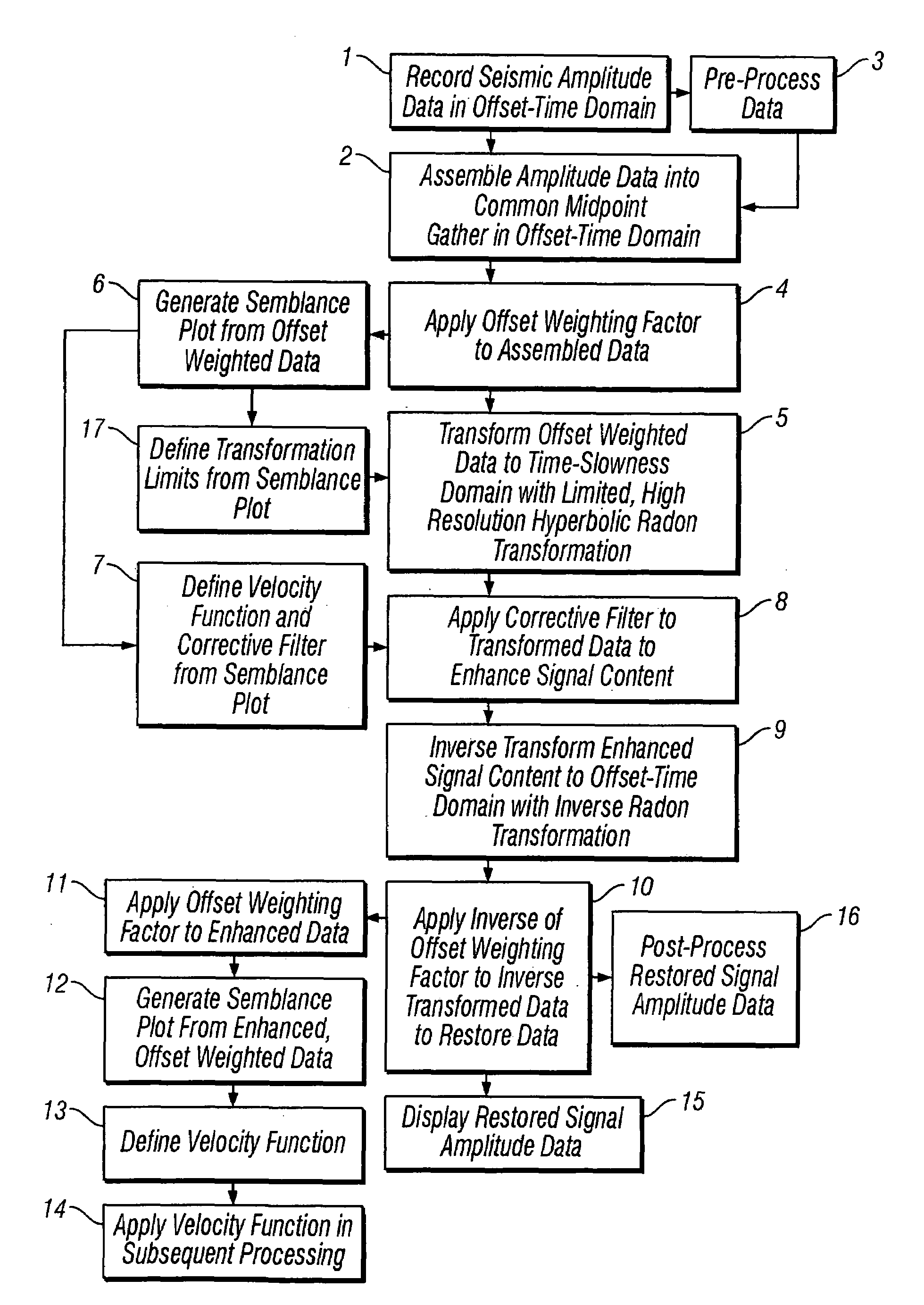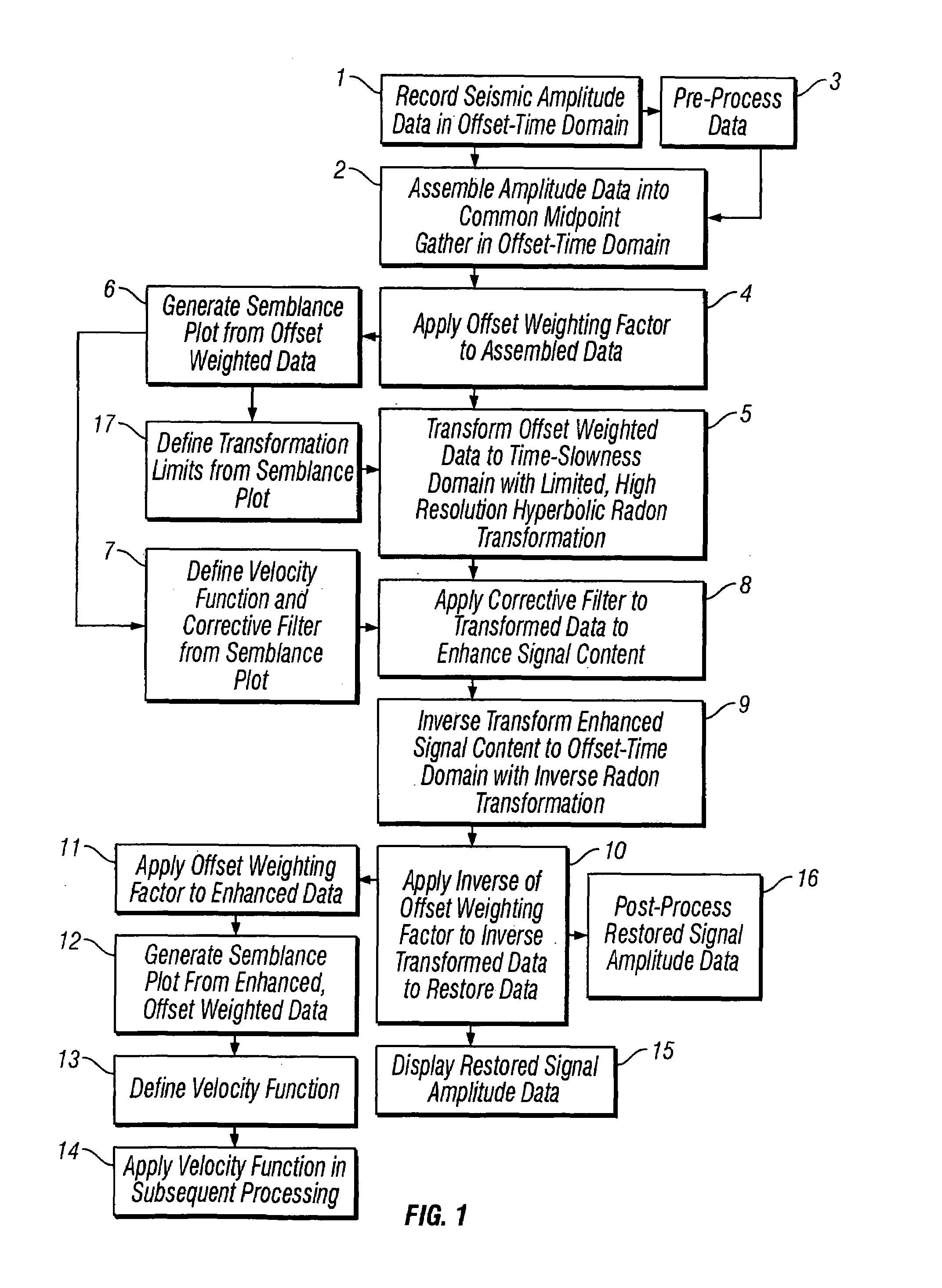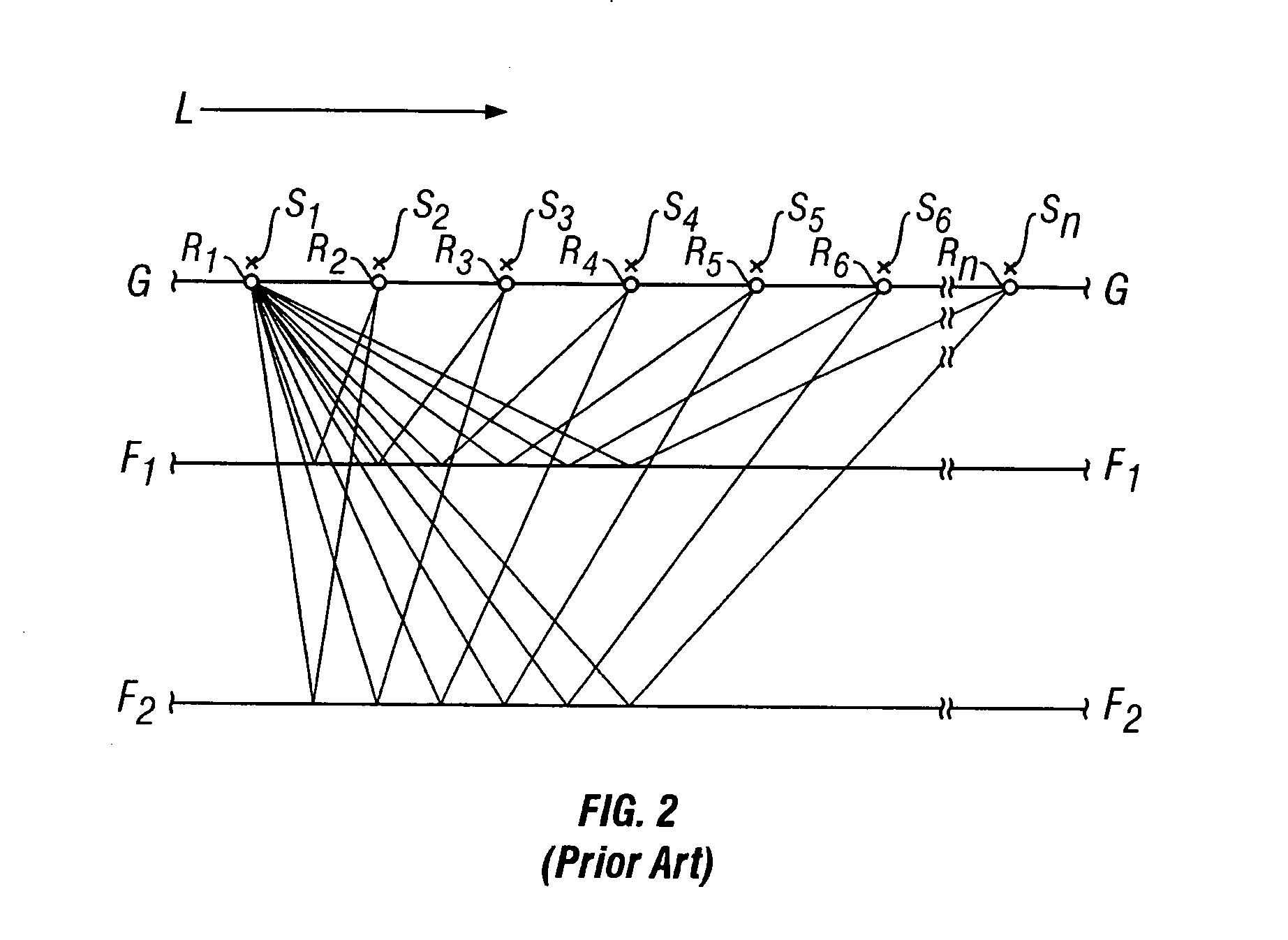Tau-P filters for removal of noise from seismic data
a technology of seismic data and filter, applied in the field of seismic data processing, can solve the problems of increasing the odds of hitting an economically recoverable reserve, difficult to reach new reservoirs, and high drilling costs, and achieve the effect of enhancing the accuracy of surveying underground geological features and accurately locating
- Summary
- Abstract
- Description
- Claims
- Application Information
AI Technical Summary
Benefits of technology
Problems solved by technology
Method used
Image
Examples
example 1
Model Data
[0235]Seismic data were modeled in accordance with conventional considerations and plotted in the offset-time domain as shown in FIG. 4. Such data display a common midpoint gather which includes desired primary reflections Ren and undesired multiples reflections Mn beginning at 1.0, 1.5, 2.0, 2.5, 3.0 and 3.5 seconds. It also includes a desired water-bottom reflection WR at 0.5 seconds. It will be noted in particular that the signals for the desired reflections Ren and WR overlap with those of the undesired multiple reflections Mn.
[0236]The modeled seismic data were then transformed into the time-slowness domain utilizing a high resolution, hyperbolic Radon transformation of the subject invention and an offset weighting factor x0.5. As shown in FIG. 5, the reflections Ren, WR, and Mn all map to concentrated point-like clusters in time-slowness space. Those points, however, map to different areas of time-slowness space, and thus, the points corresponding to undesired multip...
example 2
West Texas Production Area
[0237]A seismic survey was done in the West Texas area of the United States. FIG. 7 shows a portion of the data collected along a two-dimensional survey line. It is displayed is in the offset-time domain and has been gathered into a common midpoint geometry. It will be noted that the data include a significant amount of unwanted noise, including muted refractions appearing generally in an area 30, aliased ground roll occurring in area 31, and apparent air wave effects at areas 32.
[0238]In accordance with the subject invention, a conventional semblance analysis was performed on the data. The semblance plot was then used to identify a stacking velocity function and, based thereon, to define a filter that would preserve primary reflection events and eliminate noise.
[0239]The data of FIG. 7 were also transformed into the time-slowness domain with a high resolution, hyperbolic Radon transformation of the subject invention using an offset weighting factor x0.5. A...
example 3
West African Production Area
[0243]A marine seismic survey was done in a West African offshore production area. FIG. 11 shows a portion of the data collected along a two-dimensional survey line. It is displayed in the offset-time domain and has been gathered into a common midpoint geometry. It will be noted that the data include a significant amount of unwanted noise.
[0244]In accordance with the subject invention, a conventional semblance analysis was performed on the data. A plot of the semblance analysis is shown in FIG. 12. This semblance plot was then used to identify a stacking velocity function and, based thereon, to define a filter that would preserve primary reflection events and eliminate noise, in particular a strong water bottom multiple present at approximately 0.44 sec in FIG. 12. The semblance analysis was also used to define lower and upper slowness limits pmin and pmax for transformation of the data.
[0245]The data of FIG. 11 were also transformed, in accordance with t...
PUM
 Login to View More
Login to View More Abstract
Description
Claims
Application Information
 Login to View More
Login to View More - R&D
- Intellectual Property
- Life Sciences
- Materials
- Tech Scout
- Unparalleled Data Quality
- Higher Quality Content
- 60% Fewer Hallucinations
Browse by: Latest US Patents, China's latest patents, Technical Efficacy Thesaurus, Application Domain, Technology Topic, Popular Technical Reports.
© 2025 PatSnap. All rights reserved.Legal|Privacy policy|Modern Slavery Act Transparency Statement|Sitemap|About US| Contact US: help@patsnap.com



